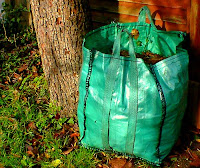I guess with
Stir up Sunday behind us now it is not too soon to be talking about Christmas preparations. This year mine will be rather different as we will be spending the holiday away from home so the dinner won't be cooked in my kitchen by me. It is a long time since that happened, time for a new family tradition to take shape. Without the turkey and trimmings to think about, I can turn my attention to some of the little extras like the mince pies.
Looking in the cupboard, I had partly-used packs of dried friut left over from cake baking so I decided to make up some fruit mince rather than use jars of the shop bought kind. The best recipe for this is in
NMAA Cooks which has to be the most used book on my kitchen bookshelf. From the spots on the page it is obvious I have made this several times before and I know it makes much more than I could use in a year. Although I have kept it from one year to the next, now that each ingredient package has a 'best by' date wagging a warning finger, I would not advise or even suggest that anyone else does the same. I am only saying that I stored it in a sealed container and used it the following year and no one suffered any adverse consequences. None-the-less this time I adapted my trusted recipe to reduce it to one fifth of the orignal quantity. That should match more closely both the ingredients I had to hand and my ambitions for mince pie making this year.
Fruit Mincemeat
Ingredient List
100g each of raisins, sultanas and currants
25g mixed peel
50g grated suet
100g cooking apple - peeled and coarsely grated or finely chopped
100g muscovado sugar
1/2 teaspoon of grated lemon and orange rind
1/2 teaspoon mixed cake spice (or a combination of cinnamon, nutmeg and allspice)
50 ml brandy or rum.
Closer scrutiny of my prep picture will reveal that the orange has become a clementine, there are no currants (I substituted extra raisins and sultanas to make up the difference) and that no one supermarket has my undivided loyalty.
Method
Check over the dried fruit and remove any little stalks then chop the fruit coarsely. This is so that they will take up the flavours quickly and also not bloat when the pies are cooked. Then in a large bowl combine the chopped fruit with the rinds, spices and suet.
In a cup mix the sugar and spirit to disslove the sugar, then pour it over the fruit. Stir it all well, cover and leave for a couple of hours. Stir well again and pack into a clean sterilised jar. Cover and store in a cool dry place for at least 4 weeks. (Made it just in time!)
This made about 1/2 litre of mincemeat.
I think I will be turning the jar on its side and rotating it a few times every couple of days just to make sure that the mixture at the bottom of the jar isn't the only bit to benefit from all that lovely sugary, spirited syrup.
And I got to thinking that a similar mixture without the suet, gently heated to cook the apple then cooled and whirled into softened vanilla icecream and refrozen would make a very good iced version of Christmas Pudding. But would that be one new tradition too many?










